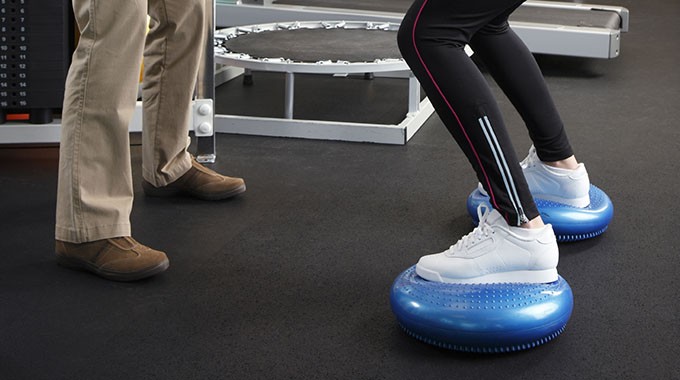If you suffer from foot pain while running, the problem may be over pronation. Pronation is a natural action that our foot makes during running and walking. After the foot makes its heel strike, the arch elongates and flattens. Weight is then transferred from the heel to the ball of the foot. The foot rolls inwards, and the sole turns outwards, upwards and sideways. When standing, pronation occurs as the foot rolls inwards and the arch of the foot flattens.
Pronation is a normal part of the gait cycle which helps to provide shock absorption at the foot. A certain amount of this is natural, but in many people the foot rolls in too much, or over pronates, and causes foot pain while running. The opposite movement to pronation is supination. This is also a normal part of the gait cycle just after the heel strike; however over supination is also not good.
Excess pronation usually causes overuse type injuries, occurring most frequently in runners. When a neutral foot pronates during walking or running, the lower leg, knee, and thigh all rotate internally. When a runner over pronates this creates an internal rotation movement of the foot and ankle. As the limb rotates in too far, increased stress is then placed on the muscles, tendons and ligaments of the foot, and the lower leg, including the shin and knee, resulting in foot pain while running.
Don’t Ignore Your Pain
Over pronation is a common problem that can lead to foot pain while running, and cause a number of injuries, including:
- Shin Splints
- Anterior Compartment Syndrome
- Patella-Femeral Pain Syndrome
- Plantar Fasciitis
- Tarsal Tunnel Syndrome
- Bunions (halgus Valgus)
- Achilles Tendonitis
Is your foot pain while running caused by over pronation?
First, look at your feet while standing; do you have a clear arch on the inside of your foot? If there is no arch, and the innermost part of the sole touches the floor, then your feet are over pronated.
Second, look at your running shoes. If they are worn on the inside of the sole, pronation may be a problem for you.
Third, try the wet foot test. Wet your feet and walk along a section of pavement. Look at the footprints you leave. A normal foot will leave a print of your heel, connected to the ball of your foot by a strip about half the width of your foot on the outside of the sole. If your feet are over pronated there may be little distinction between your heel and the ball of your foot.
The best way to determine if you over pronate is to visit a physical therapist. A physical therapist can do a full gait analysis on a treadmill, use forceplates to measure the forces and angles of your foot, look at your shoe wear, and assess the range of motion and strength in the joints and muscles of your foot and leg to determine what is causing you to experience foot pain while running.
If you are an avid runner, weekend warrior, or someone who runs occasionally and are having foot pain, don’t wait to get relief, consult your local physical therapist so you can enjoy running again.






